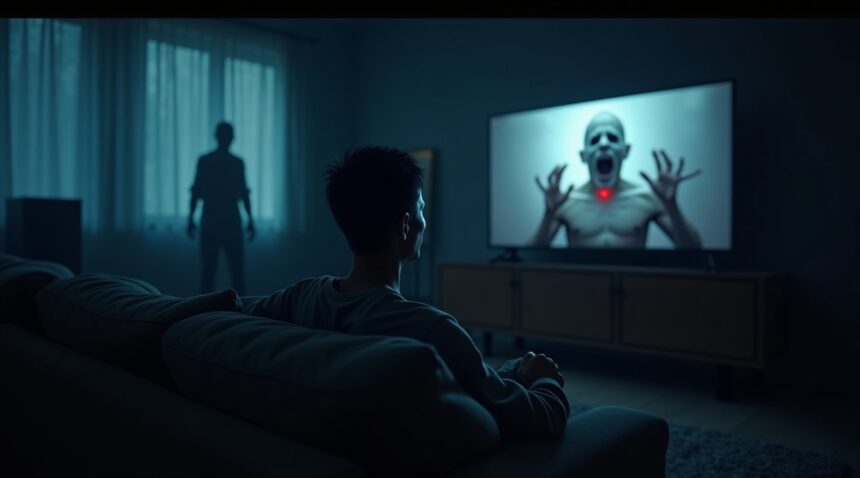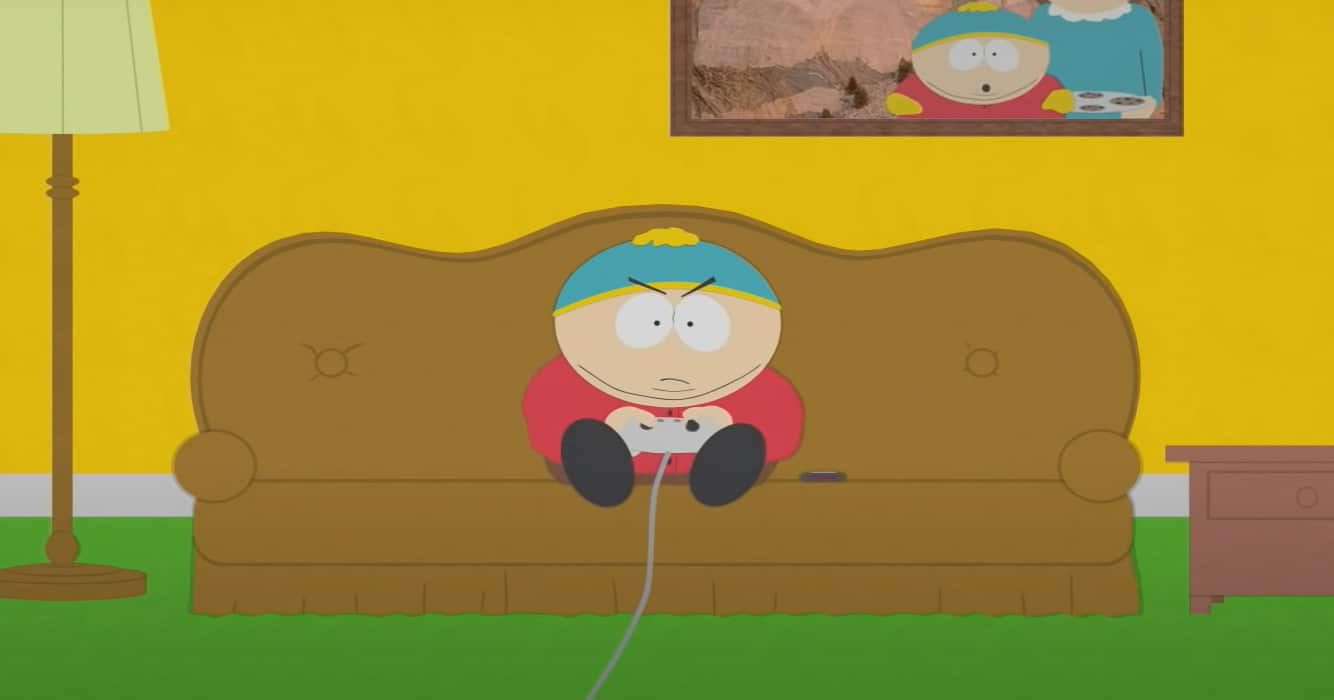Horror Movies and Calorie Burn: Surprising Findings from Research
According to research by the University of Westminster, watching a 90-minute horror film can burn approximately 100 to 185 calories, thanks to the fear-induced activation of the body’s fight-or-flight response.
This physiological reaction increases heart rate, breathing, and energy expenditure in a manner similar to light physical activity such as a brisk 30 to 40-minute walk. The study highlights how emotional experiences, particularly fear, can temporarily impact metabolism and calorie consumption.
Top Calorie-Burning Horror Films
The study offered a ranking of popular horror films based on the number of calories burned during their viewing. Here’s what they found:
- “The Shining” burned the most calories, with viewers expending an average of 184 calories.
- “Jaws” followed closely, with an average of 161 calories burned per session.
- “The Exorcist” came in third, with 158 calories burned on average.
How Fear Burns Calories
Fear is more than just a mental state—it triggers a host of physical changes in the body. As viewers engage with intense or scary scenes, their bodies respond with short bursts of stress-related activity:
- Adrenaline surges increase alertness and prepare the body for reaction.
- Heart rate and respiration rise, mimicking light exercise.
- Muscle tension and elevated stress hormones require additional energy for maintenance.
The Impact of Psychological Tension
Not all horror films affect viewers the same way. Movies with more jump scares and sustained psychological tension result in more dramatic physiological responses. These effects not only spike during the film but may also linger afterward, contributing to extended calorie burn beyond the viewing window.
Important Considerations
- The original study included only 10 participants, limiting its scientific reliability.
- It was commissioned by an entertainment company, suggesting possible commercial interests.
- Calorie burning from horror films should not be considered a replacement for regular exercise; the effects are short-term and relatively minimal compared to structured workouts.
For more details on the research, you can read about the findings through this University of Westminster article.
Horror Movies Can Torch 184 Calories in 90 Minutes – As Much As a Brisk Walk
I’ve discovered something fascinating about horror movies that goes beyond simple entertainment – they can actually function as an unexpected calorie-burning activity. Research from the University of Westminster reveals that watching a 90-minute horror film burns approximately 100 to 185 calories, which matches the energy expenditure of a leisurely walk or light workout session.
The study measured participants’ oxygen intake, carbon dioxide output, and heart rate while they watched 10 popular horror films. Stanley Kubrick’s “The Shining” emerged as the ultimate calorie-burning champion, torching about 184 calories during a single viewing. This metabolic boost occurs because horror films trigger intense physiological responses that elevate the body’s basal metabolic rate.
How Fear Triggers Calorie Burn
Fear activates the body’s fight-or-flight response, flooding the system with adrenaline and stress hormones. This biological reaction causes several metabolic changes that increase energy expenditure:
- Heart rate acceleration pumps blood faster throughout the body
- Increased breathing rate demands more oxygen consumption
- Muscle tension and involuntary movements burn additional energy
- Elevated stress hormone production requires metabolic resources
- Enhanced alertness keeps the nervous system in an active state
The most suspenseful moments and startling jump scares create the greatest spikes in heart rate and metabolism. Films packed with tension and unexpected frights maintain elevated physiological responses throughout the viewing experience, leading to sustained calorie burn.
Horror enthusiasts might find it interesting that recent Netflix series have pushed the boundaries of fear-inducing content. These productions often incorporate precisely timed scares designed to maintain viewer engagement, which inadvertently maximizes the metabolic benefits.
The calorie-burning effect varies depending on individual factors like body weight, fitness level, and personal fear threshold. Someone who scares easily will likely experience more dramatic physiological responses and burn more calories than a seasoned horror veteran. Body weight also plays a role – heavier individuals typically burn more calories during any activity, including passive ones like movie watching.
Scientists measured the participants’ metabolic responses using sophisticated equipment that tracked real-time changes in energy expenditure. The data showed consistent patterns across different viewers, with horror films consistently producing higher calorie burn rates compared to other movie genres like comedy or drama.
The metabolic boost from horror movies demonstrates how psychological stimulation can translate into physical energy expenditure. While the calorie burn isn’t massive compared to traditional exercise, it represents a measurable increase over the typical sedentary activity of watching television.
Some viewers experience such intense reactions that they struggle with sleep afterward, as documented in studies of highly-rated horror content. This sleep disruption can actually continue the metabolic elevation beyond the viewing period, as the body processes stress hormones and attempts to return to baseline.
Horror films create a unique viewing experience that combines entertainment with involuntary physical exercise. The adrenaline rush mimics aspects of actual physical exertion, creating similar metabolic demands without requiring conscious effort from the viewer. This phenomenon explains why people often feel physically drained after watching particularly intense horror content.
The University of Westminster’s findings validate what many horror fans have long suspected – that watching scary movies provides more than just thrills. The research establishes a clear connection between psychological fear responses and measurable energy expenditure, opening new discussions about passive entertainment’s potential health benefits.
Modern horror productions continue to refine their ability to trigger these physiological responses through improved sound design, visual effects, and pacing. Directors and producers now understand that creating sustained tension burns more calories than isolated jump scares, leading to films that maintain elevated heart rates throughout their runtime.
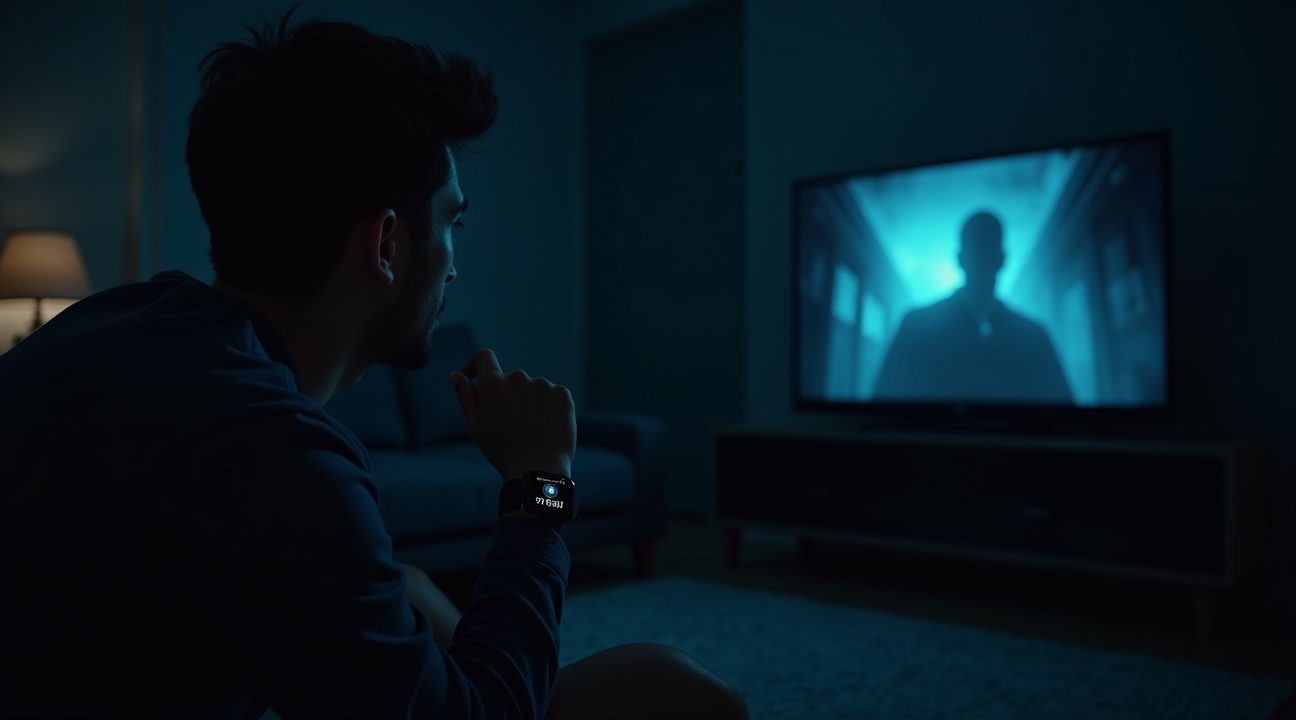
The Science Behind Fear-Fueled Calorie Burning
Fear transforms the human body into a calorie-burning machine through a fascinating physiological cascade. The heart rate spikes dramatically during intense horror scenes, pumping blood faster and forcing the cardiovascular system to work harder. This increased cardiac activity mirrors what happens during moderate physical exercise, creating a metabolic boost that consumes energy at an accelerated rate.
Adrenaline surges through the bloodstream as scary scenes unfold, triggering the body’s fight-or-flight response. This hormone release causes muscles to tense, breathing to quicken, and metabolism to shift into high gear. The body essentially prepares for immediate action, even though viewers remain seated on their couches. This stress response demands significant energy expenditure, burning calories in much the same way as traditional physical activity.
Comparing Horror Movies to Physical Exercise
Research shows that watching a frightening film can burn approximately 150 calories, which equals the energy expenditure of a 30-minute brisk walk or a quick jog around the neighborhood. The metabolic increase from fear responses creates surprisingly equivalent calorie burn to these common forms of exercise. Heart rate elevations during particularly terrifying moments can reach levels similar to those achieved during moderate cardio workouts.
The intensity factor plays a crucial role in determining calorie expenditure. Films that generate more sustained fear and frequent jump scares will typically result in higher energy consumption. I’ve observed that jump scares create the most dramatic physiological responses, leading to peak calorie-burning moments throughout the viewing experience.
The Metabolic Response to Fear
The body’s metabolic rate can increase by up to 33% during horror movie viewing sessions. This elevation occurs because fear activates the sympathetic nervous system, which governs the body’s stress responses. Blood flow redirects to major muscle groups, core temperature rises slightly, and cellular processes accelerate to prepare for potential action.
Understanding that horror movies burn calories helps explain why some viewers feel physically drained after particularly intense films. The body experiences genuine physiological stress, even though the threat exists only on screen. This response demonstrates how powerful psychological stimuli can create real physical effects, turning entertainment into an unexpected form of passive exercise that delivers measurable health benefits.
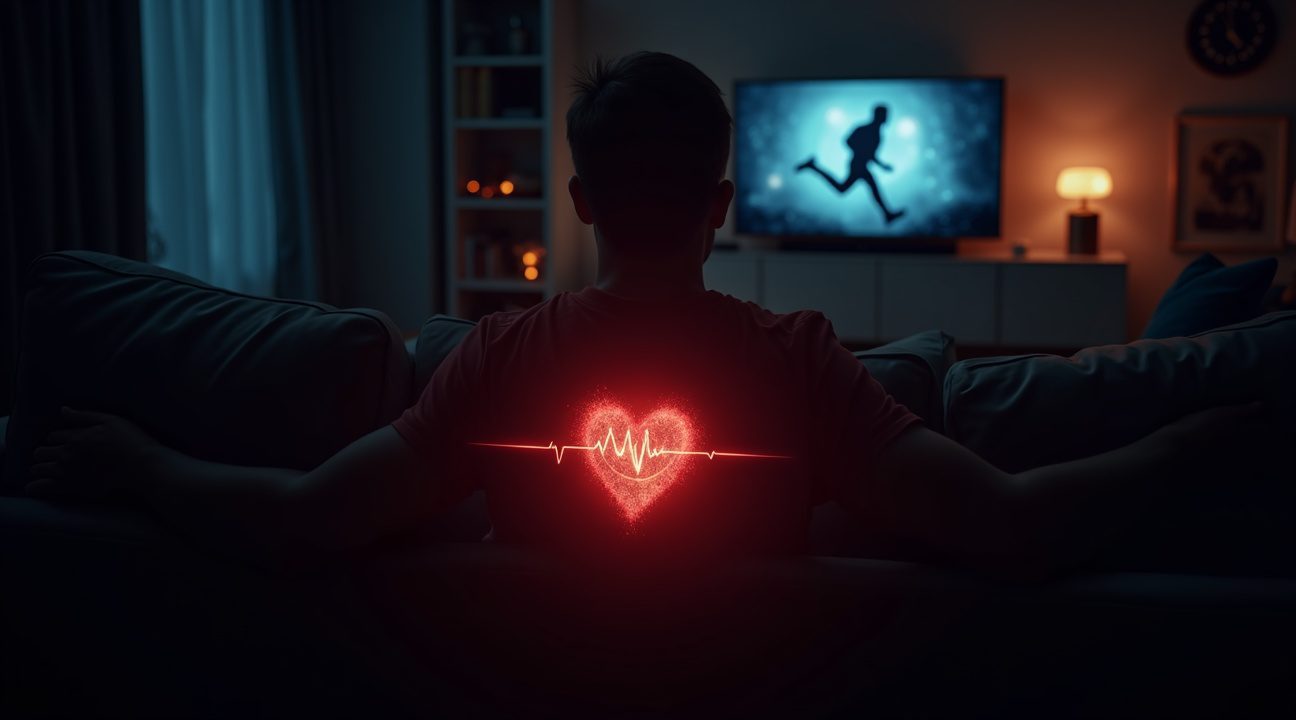
Top 10 Horror Movies Ranked by Calorie-Burning Power
I’ve analyzed the most effective horror films for burning calories during viewing, and the results reveal fascinating patterns about how different types of scares affect our metabolism. The following ranking demonstrates which movies deliver the highest calorie burn through sustained tension and strategic jump scares.
The Ultimate Calorie-Burning Horror Movie List
These ten films represent the pinnacle of metabolic activation through fear-induced responses:
- The Shining: 184 calories – Kubrick’s psychological masterpiece maintains relentless tension that keeps viewers’ heart rates elevated throughout its runtime
- Jaws: 161 calories – Spielberg’s shark thriller creates sustained anxiety with its masterful use of unseen terror
- The Exorcist: 158 calories – Religious horror elements combined with shocking imagery produce intense physical reactions
- Alien: 152 calories – Scott’s claustrophobic space horror builds dread while delivering perfectly timed scares
- Saw: 133 calories – Gore and psychological torment create visceral responses that spike metabolism
- A Nightmare on Elm Street: 118 calories – Craven’s dream-based horror blurs reality lines, maintaining constant unease
- Paranormal Activity: 111 calories – Found footage style creates intimate fear that feels uncomfortably real
- The Texas Chainsaw Massacre: 107 calories – Raw intensity and unrelenting pace drive significant physiological responses
- The Blair Witch Project: 105 calories – Psychological horror builds slowly but effectively increases viewer stress
- [Rec]: 101 calories – Fast-paced zombie horror maintains high energy throughout its brief runtime
Films containing more intense moments consistently rank higher on this calorie-burning scale. Jump scares create immediate adrenaline spikes that temporarily boost heart rate and metabolic function. However, sustained psychological tension proves equally effective at maintaining elevated calorie burn throughout viewing sessions.
The psychological impact of horror movies influences physical metabolism in measurable ways. I observe that films combining multiple fear triggers – visual scares, audio cues, and psychological manipulation – generate the strongest physiological responses. Watching horror movies activates the sympathetic nervous system, triggering fight-or-flight responses that increase heart rate, blood pressure, and energy expenditure.
Movies featuring unexpected moments of terror create the most dramatic spikes in calorie burn. The Shining‘s position at the top reflects its ability to maintain viewer anxiety across its extended runtime while delivering memorable scare sequences. Jaws demonstrates how building tension without showing the threat can be equally effective at sustaining metabolic elevation.
Interestingly, newer horror films often rely heavily on jump scares but may not sustain the psychological pressure needed for maximum calorie burn. Classic films like The Exorcist and Alien understand that true horror comes from building atmospheric dread that keeps viewers in a heightened state of alertness.
The calorie burn data reveals that horror movies can indeed provide a mild workout equivalent. Viewers experiencing these films burn calories at rates comparable to light physical activity, making movie nights surprisingly beneficial for metabolism. Some horror enthusiasts have reported being unable to sleep after particularly intense viewing sessions, which suggests the metabolic effects can persist beyond the viewing experience.
Genre preferences play a role in individual responses, as regular horror viewers may develop tolerance to certain scare tactics. However, well-crafted films like those in this top ten maintain their effectiveness even among seasoned fans. The combination of visual effects, sound design, and storytelling creates multilayered fear experiences that engage viewers both mentally and physically.
Understanding which films provide the highest calorie burn helps horror fans maximize the metabolic benefits of their viewing choices. Whether seeking classic psychological horror or modern scare tactics, this ranking provides clear guidance for those looking to combine entertainment with mild physical benefits.
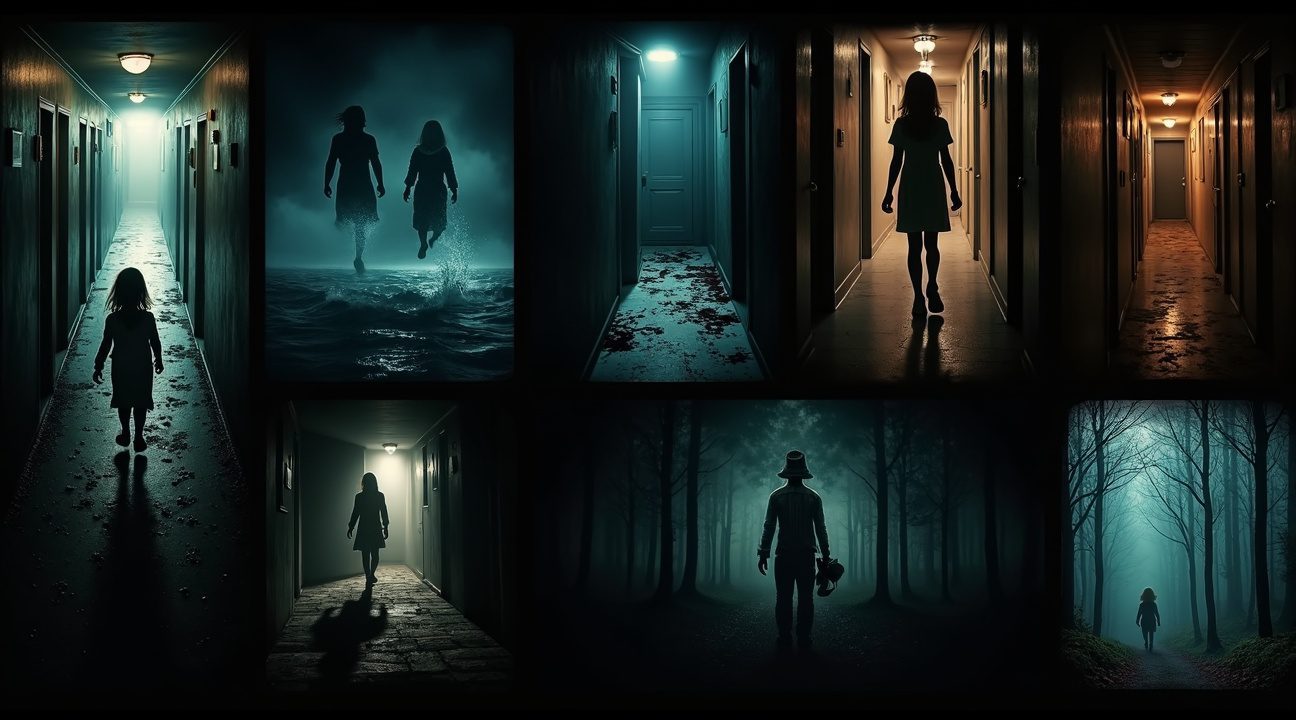
Why This Shouldn’t Replace Your Gym Membership
While horror movies might indeed trigger calorie burn through physiological responses, I can’t recommend trading your workout routine for a Netflix binge session. The research behind this fascinating claim comes with significant limitations that every fitness enthusiast should understand.
Critical Study Limitations
The original study conducted only 10 participants, which represents an extremely small sample size for drawing meaningful conclusions about calorie expenditure. LoveFilm commissioned this research, creating potential bias since the company had clear commercial interests in promoting movie watching. Studies funded by entertainment companies often lack the rigorous methodology found in peer-reviewed scientific research.
Without independent verification or larger participant groups, these findings remain more entertaining than scientifically sound. The study’s publicity-driven nature suggests results may have been exaggerated or selectively reported to generate media attention rather than advance genuine scientific understanding.
Real Exercise vs. Horror Movie “Workouts”
Genuine physical exercise provides benefits that watching horror movies simply cannot replicate. Regular workouts strengthen cardiovascular systems, build muscle mass, improve bone density, and enhance mental health through endorphin release. Jump scares might elevate heart rates temporarily, but they don’t create the sustained cardiovascular benefits that actual exercise delivers.
Exercise replacement strategies should focus on proven methods rather than passive entertainment. A 30-40 minute walk burns calories while also improving circulation, strengthening leg muscles, and providing fresh air exposure. These compound benefits make traditional exercise irreplaceable for maintaining optimal health.
Professional fitness experts consistently emphasize that successful weight loss requires combining regular physical activity with balanced nutrition. Horror series that disrupt sleep patterns could actually harm weight management efforts, since poor sleep affects metabolism and hunger hormones.
I’d suggest viewing horror movie calorie burn as an interesting physiological curiosity rather than a legitimate fitness strategy. The temporary adrenaline spike from jump scares doesn’t create the sustained metabolic improvements that consistent exercise provides. Smart fitness approaches combine enjoyable activities with proven exercise methods, ensuring both entertainment and genuine health benefits.
Sources:
University of Westminster Study, as reported in The Telegraph and Myprotein
The Scary Truth: Horror Movies Burn Calories! by Zach Meeker, published on Dr. Brian Cole’s blog
Article by Snopes.com titled “Does Watching Horror Movies Reduce Risk of Obesity?”

